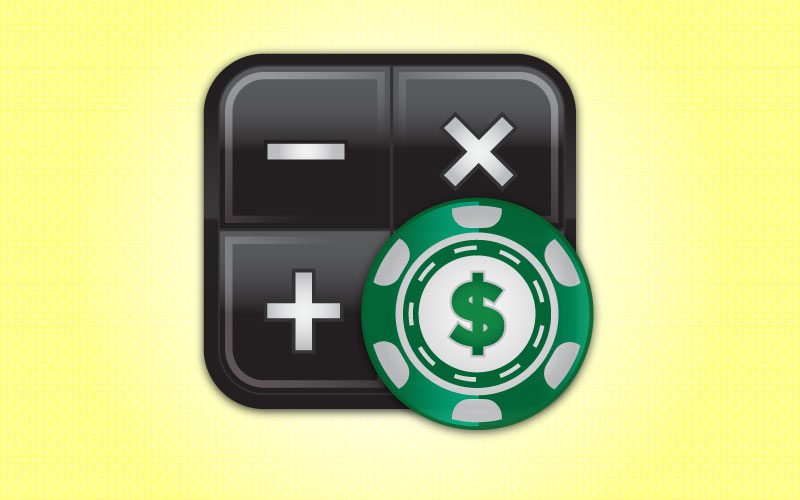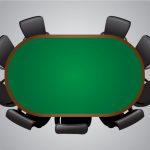Introduction
In this week’s edition of [spoonitnow strategy], we’re going to look at some considerations for bluffing. We’re going to look at the role of position, the role of outs and when each is important for improving the EV of your bluffs. What we’re going to look at this week is stuff that’s really important to know and understand, but it’s not really covered in much of the beginner’s material that you’ll find in the standard canon of books. Let’s get started.
The Role of Position in Bluffing
If we think about poker in terms of trying to make the right play in a vacuum, then bluffing should be done when it’s better than the alternative. If it checks to us, or if we’re first to act, then we’re going to have to choose between bluffing and checking. When we’re last to act with a hand that has outs, checking has a lot more value than usual because we get a free chance to improve our hand.
Bluffing and Checking in Position
Without going into the specifics of the mathematical equations involved, we can show that the value of bluffing is roughly the same both in position and out of position while the value of checking is higher in position than out of position. Consider the EV of checking when we’re in position against a single opponent with outs to the nuts:
EV of checking = (chance of improving)(size of pot + size of future bets) + …
Now consider the same EV if we’re out of position against one opponent:
EV of checking = (chance Villain checks)(chance of improving)(size of pot + size of future bets) + …
Because the chance Villain checks is less than 100 percent, your EV is going to be lower.
The Logical Conclusion
The logical conclusion to be made from this is that you should be bluffing more often in position than when you’re out of position. It’s not that the value of bluffing changes all that much, but because the value of checking increases in position, that means that bluffing will be the correct option less often.
The Role of Outs in Bluffing
It’s not really news to anybody that adding outs increases the value of bluffing. However, when you look at how much value outs actually add in terms of a percentage of your bet size, then it can really change your perspective on how you form your bluffing ranges. We’re going to look at some basic situations with different numbers of outs and see how the EV changes.
The Pure Bluff
Suppose we’re on the river with a $10 pot and $8 behind against a single opponent. We shove, and we expect our opponent to fold 50 percent of the time. The EV of our bluff is:
EV of bluff = ($10)(0.50) + (-$8)(0.50)
EV of bluff = $5.00 – $4.00
EV of bluff = $1.00
The key thing to look at here is the second term (-$4.00) and how that changes when we add outs.
A One-Out Semi-Bluff
Suppose we have the same $10 pot and the same $8 stacks against a single opponent, and we’re on the turn this side with one out to the nuts if we’re called. He still folds 50 percent of the time. Now look at the EV of our bluff:
EV of bluff = ($10)(0.50) + (0.50)(1/46)($18) + (0.50)(45/46)(-$8)
EV of bluff = $5.00 + $0.20 – $3.91
EV of bluff = $1.29
What you need to notice here is that second term has broken up into two parts. We gain a small amount of value from the times that we are called and hit our out, and while that’s important, that’s not the entire picture. We also lose less from the times that we are called and lose just because it happens less often. These two factors combine to turn that -$4.00 from the pure bluff into what’s effectively -$3.71 by adding just a single out.
The Role of Outs in Checking
We looked at how outs affect the value of bluffing, and now we’re going to look at how it affects the value of checking. This can be a little complicated because we have to take into consideration the fact that we could have the best hand to begin with a small portion of the time. For now, we’re going to ignore that and just look at the value we get from checking and hitting outs. Along these lines, the value of it checking down on the river and us winning anyway will just be icing on the cake.
Checking Down With One Out
It’s a $10 pot with $8 behind on the turn. We’re in position, and it checks to us. We have a single out to the nuts. We’ll say that we get the stacks in 10 percent of the time on the river when we hit for the sake of example. Note that as this increases, the value of checking increases. Here’s the portion of the EV of checking that’s due to hitting our out on the river:
EV of checking = (1/46)($10) + (1/46)($8)(0.10)
EV of checking = $0.22 + $0.02
EV of checking = $0.24
That’s not all that impressive. However, notice that we can scale this directly for our number of outs. That is, if we want to know the EV of checking with eight outs, we can just multiply this figure by eight. Along these lines, we can compare the EV of bluffing with N outs with the EV of checking with N outs to find a general rule.
In Conclusion
Bluffing can be seen as a simple thing with tools like the bet/(bet+pot) shortcut, but we have to remember that this only tells us if bluffing itself is profitable. It tells us nothing about whether or not bluffing is better than checking, and to figure that out, we have to consider details like what we’ve looked at in this week’s column.
Submit your review | |









